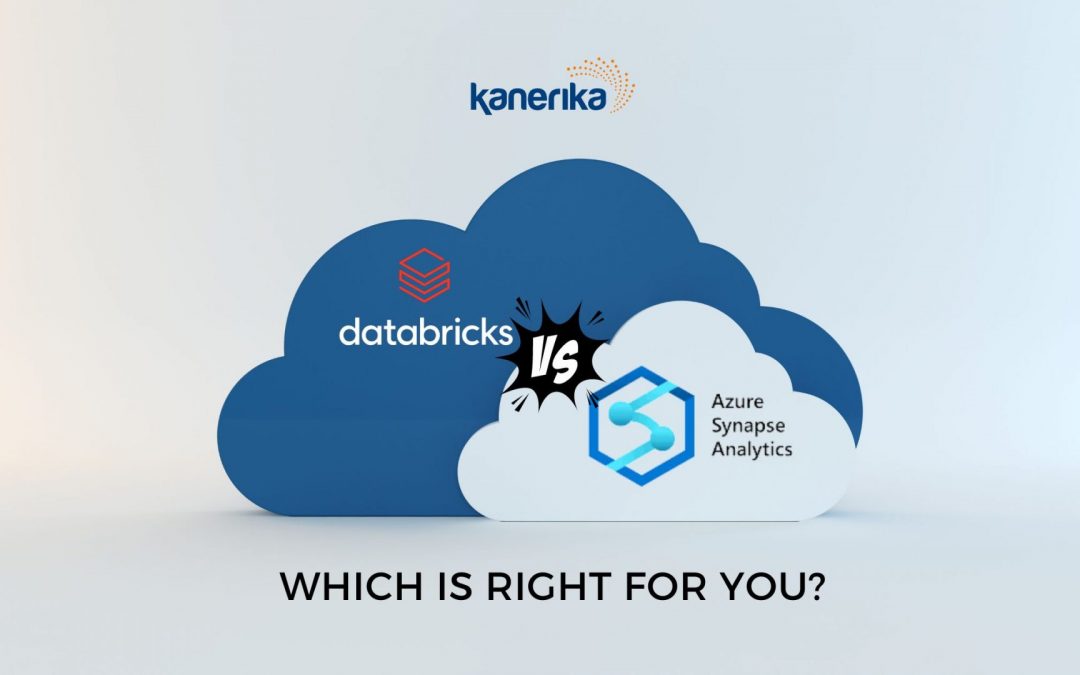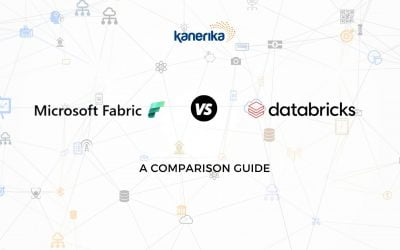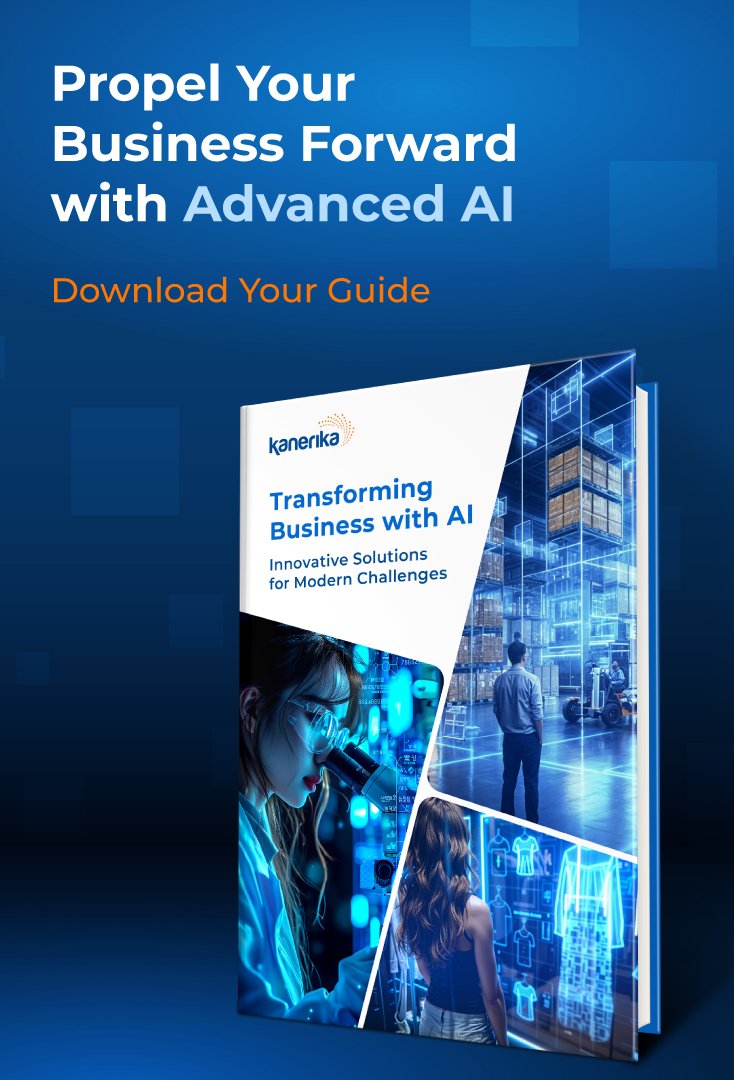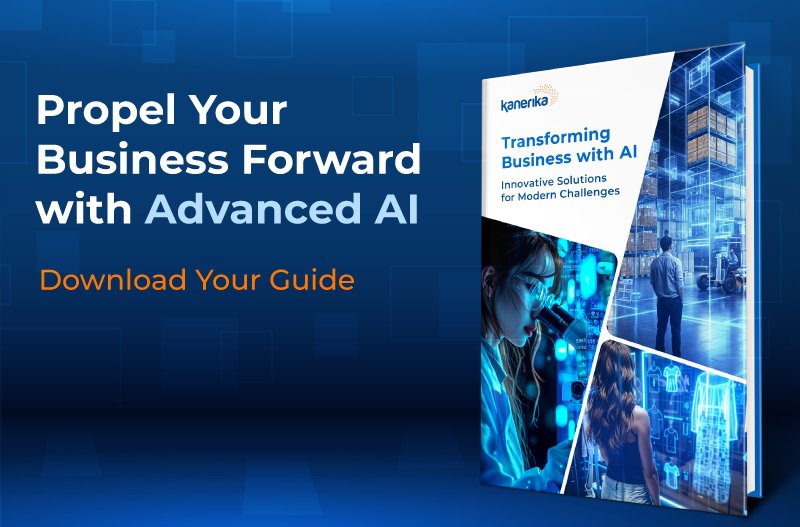As Carly Fiorina, former CEO of HP, rightly said, “The goal is to turn data into information and information into insight.”
In this article, we will explore two of the leading analytics solution available for businesses and compare to find out which one is the right technology for you. Let’s take a deep dive into Azure Synapse vs Databricks.
Table of Contents
- Introducing Azure Synapse
- Introducing Databricks
- Azure Synapse vs Databricks: Why the Comparison Matters
- Azure Synapse vs Databricks: Key Features
- Azure Synapse vs Databricks: Architectural Differences
- Azure Synapse vs Databricks: Machine Learning Capabilities
- Azure Synapse vs Databricks: Pricing Models
- Azure Synapse vs Databricks: Data Security
- Azure Synapse vs Databricks: Comparison Table
- Which One is Right for You?
- The Value of Partnering with a Trusted Analytics Consultancy
- Kanerika – Your Partner in Growth with Data Analytics
- FAQs
Azure Synapse vs Databricks: Why the Comparison Matters
Selecting the right data analytics platform is crucial for your business because it’s the key to unleashing your data’s full potential. Here’s why discussing Azure Synapse vs Databricks matters:
- Efficiency: The right platform saves time and resources, making data analysis faster and less labor-intensive.
- Accuracy: It ensures your data is reliable, preventing costly errors.
- Informed Decisions: The platform provides deeper insights and recommendations, helping you make data-driven choices.
- Cost Savings: The right platform can reduce unnecessary expenses by eliminating the need for multiple tools.
- Scalability: It can grow with your business as data complexity increases.
In a nutshell, choosing the right data analytics platform can be the difference between success and failure for your business, especially due to the costs and potential revenue generating opportunities associated with it.
Azure Synapse vs Databricks: Key Features
An Integrated Approach to Data Analytics – Azure Synapse
Azure Synapse Analytics, formerly known as Azure SQL Data Warehouse, is an integrated analytics service provided by Microsoft Azure. It brings together big data and data warehousing into a single platform.

Source: Microsoft
Read More: Data Analytics in Telecom Industry: A Comprehensive Guide
Here are some key features of Azure Synapse Analytics:
- Integrated Environment: Azure Synapse offers a platform for data preparation, management, and exploration.
- Resource Flexibility: Choose between on-demand or provisioned resources for cost and performance.
- Big Data Integration: Azure Synapse works with storage solutions like Azure Data Lake for data querying.
- Serverless Exploration: Azure Synapse Studio allows data exploration without managing infrastructure.
- Real-time Analytics: Azure Synapse provides real-time data insights.
- Machine Learning: Integrate with Azure Machine Learning for model building, training, and deployment.
- Security: Azure Synapse has enterprise security, including firewall rules and data encryption.
- Scalability: Azure Synapse adjusts to data volume needs, ensuring performance and cost flexibility.
- Development Tools: It integrates with tools like Power BI and Azure Data Factory.
- Data Warehousing: Azure Synapse is a cloud data warehouse with massively parallel processing capabilities.
Databricks: Flexible and Open Source
Databricks is a cloud-based platform designed for big data analytics and artificial intelligence (AI). It was founded by the original creators of Apache Spark, a powerful open-source, distributed computing system.
Here are some key features of Databricks:
- Unified Analytics: Databricks offers a space for data engineers, scientists, and analysts to collaborate.
- Spark Integration: Developed by Apache Spark creators, Databricks provides an optimized Spark version for large-scale tasks.
- Interactive Workspaces: Databricks has notebooks supporting Python, Scala, SQL, and R for data collaboration.
- Managed MLflow: Databricks integrates MLflow for managing the machine learning lifecycle.
- Delta Lake: Introduced by Databricks, Delta Lake ensures data reliability in Spark and big data tasks.
- Scalability: Databricks adjusts resources based on workload for optimal performance and cost.
- Security: Databricks has enterprise security, including encryption and role-based access control.
- Integration: Databricks works with AWS S3, Azure Blob Storage, and BI tools like Tableau.
- Optimized Runtime: Databricks Runtime enhances Apache Spark’s performance and usability.
- Cloud Integration: Databricks is available on Azure and AWS platforms.
Azure Synapse vs Databricks: Architectural Differences
Azure Synapse: MPP Architecture

Source: Microsoft
Azure Synapse Analytics is built on a massively parallel processing (MPP) architecture. It is designed to handle large-scale data warehousing workloads and can scale up to petabytes of data.
The MPP architecture of Azure Synapse Analytics is based on a shared-nothing architecture, where each node in the cluster has its own CPU, memory, and storage. This allows for parallel processing of queries across the nodes, which results in faster query performance.
Read More: Databricks Vs Snowflake: Choosing Your Cloud Data Partner
Databricks: Lake House Architecture
Databricks, on the other hand, uses a Lake House architecture. Azure Databricks architecture combines the best features of data lakes and data warehouses into a single platform.
The Lake House architecture of Databricks is based on the Delta Lake technology, which provides ACID transactions, schema enforcement, and indexing capabilities on top of data lakes. Azure Databricks architecture allows for faster query performance and better data governance compared to traditional data lakes.
Synapse vs Databricks: Machine Learning Capabilities
Azure Synapse: Limited Git Support
- Offers built-in machine learning model training
- Integrates with Azure Machine Learning for broader ML tasks
- Git support in Synapse Studio is limited
- Doesn’t natively support GPU clusters for ML
Databricks: Streamlined ML Workflows

Source: Databricks
- Provides a unified platform for end-to-end machine learning
- Integrates seamlessly with MLflow for ML lifecycle management
- Supports GPU-enabled clusters for faster model training
- Robust Git integration ensures smooth version control
- Supports libraries like TensorFlow, PyTorch, and Scikit-learn
Azure Synapse vs Databricks: Pricing Models
Azure Synapse: Storage and Processing Driven Pricing
The pricing of Azure Synapse Analytics is based on two factors: data storage and data processing
Azure Synapse Analytics offers various pricing editions, ranging from $4,700 to $259,200. The specific features and benefits of each edition is on the official Azure website.
The first 1 million operations per month are free. After this threshold, there are charges associated with the number of operations. For instance, after the first 1 million operations, there might be a charge of $0.25 per 50,000 operations.
Since Azure Synapse Analytics charges separately for storage and compute, it is difficult to obtain an estimate since it will vary on a case to case basis.
Databricks: Simplified and Transparent Pricing
Azure Databricks pricing is based on the number of compute resources consumed. Azure Databricks costs do not include storage. You have to buy storage separately from Azure or AWS.
Here are some examples of Azure Databricks pricing for different tasks –
- “Workflows & Streaming – Jobs” starts at $0.07 / DBU for data engineering and building data lakes.
- “Workflows & Streaming – Delta Live Tables” is priced at $0.20 / DBU for streaming or batch ETL using Python or SQL.
- Data Warehousing – Databricks SQL” starts at $0.22 / DBU for SQL queries, BI reporting, and data lake visualization.
- “All Purpose Compute” begins at $0.40 / DBU for interactive data science and machine learning.
- “Serverless Real-time Inference” is priced at $0.07 / DBU for live predictions in apps and websites.
Read More: Data Transformation – Benefits, Challenges and Solutions in 2023
Azure Synapse vs Databricks: Data Security
Azure Synapse Analytics: Comprehensive Security
It offers comprehensive security features to safeguard your data and applications. It includes network security and threat protection to detect SQL injection attacks, unusual access locations, and authentication attacks.
- Offers firewall rules and virtual network service endpoints.
- Provides managed private endpoints for secure access.
- Integrates with Azure Active Directory for authentication.
- Encrypts data at rest and in transit.
- Supports advanced threat protection and monitoring.
Databricks: Role-Based Access Control

Source: Databricks
Databricks provides role-based access control (RBAC) for managing user access to resources. RBAC allows you to assign roles to users or groups, determining their level of access to resources.
- Implements role-based access control for granular permissions.
- Uses encryption for data at rest and in transit.
- Integrates with enterprise identity providers for authentication.
- Provides audit logs for monitoring and compliance.
- Supports virtual private cloud (VPC) peering for secure connections.
Azure Synapse vs Databricks: Comparison Table
This table shows, in a nutshell, our entire discussion about Azure Synapse versus Databricks.
| Feature Category | Azure Synapse | Databricks |
|---|---|---|
| Overview | Integrated analytics service combining data warehousing and big data analytics. | Cloud-based platform emphasizing unified analytics and AI. |
| Azure Databricks vs Synapse Analytics Architecture | Uses a blend of data warehousing and big data analytics with Synapse SQL and Apache Spark. | LakeHouse architecture combining data lakes and data warehouses. |
| Azure Databricks vs Synapse Analytics Machine Learning | Integrated with Azure Machine Learning; limited Git support; no native GPU clusters. | Unified ML platform with MLflow; robust Git integration; supports GPU clusters. |
| Azure Databricks vs Synapse Analytics Data Security | Firewall rules, virtual network endpoints, Azure AD integration, encryption at rest and in transit. | Role-based access control, encryption, enterprise identity provider integration, VPC peering. |
| Azure Databricks vs Synapse Analytics Scalability | Provides Massive Parallel Processing (MPP) for analytical workloads. | Auto-scaling and optimized runtime for efficient data processing. |
| Azure Databricks vs Synapse Analytics Integration | Integrates with various Azure services and supports multiple programming languages. | Supports a wide range of ML libraries and integrates with various data storage solutions. |
| Azure Databricks vs Synapse Analytics Development Tools | Synapse Studio for collaborative analytics. | Databricks UI and Databricks Connect for enhanced developer experience. |
| Azure Databricks vs Synapse Cost | Pay-as-you-go with options for committed-use discounts. | Flexible pricing based on DBU usage; offers committed-use discounts. |
| Azure Databricks vs Synapse Analytics Cloud Integration | Primarily integrated with Microsoft Azure services. | Available on major cloud platforms including Azure and AWS. |
Which One is Right for You?
Choosing between Azure Synapse and Databricks hinges on your business’s specific needs and the intricacies of your sector.
If you’re in the market for a comprehensive analytics service that merges data warehousing and big data analytics, Azure Synapse is your prime candidate. As an integrated offering from Microsoft, it boasts features like real-time analytics, machine learning integration, and a robust security framework. Its design caters to businesses aiming for a harmonized platform that bridges the gap between traditional data warehousing and modern big data analytics.
Conversely, if your priority lies in harnessing the power of a platform rooted in unified analytics and artificial intelligence, Databricks stands out. Founded by the original creators of Apache Spark, Databricks delivers an optimized Spark experience, making it a powerhouse for large-scale data tasks. With its cloud flexibility, available on platforms like Azure and AWS, and unique features such as Delta Lake and MLflow, Databricks is tailored for those who seek a cutting-edge solution for big data and machine learning endeavors.
Read More- Choosing Your Azure Ally: Databricks vs Data Factory
The Value of Partnering with a Trusted Analytics Consultancy Firm
Today’s data-driven landscape requires businesses to increasingly recognize the significance of harnessing the power of data analytics. However, most analytics solutions require customization and business clarity to truly maximize their output.
The long and complex process of technology selection, system integration, data security, and regulatory adherence can often be daunting. This is where the right data analytics partner can make a world of difference for businesses. Let’s delve into the advantages of such strategic collaborations:
Read More: 10 Best Data Transformation Tools in 2023
1. Partnership Guided by Success
A seasoned analytics partner offers a well-charted roadmap, honed through numerous successful ventures. Their expertise not only accelerates deployment but also safeguards against potential pitfalls and risks.
2. Tailored Expertise with Ethical Foundations
A reputable consultancy boasts in-depth knowledge of cutting-edge analytics technologies, coupled with a deep understanding of your industry’s nuances. This dual expertise ensures solutions that are both tailored to your needs and ethically compliant, a crucial aspect for sectors like healthcare and insurance.
3. State-of-the-Art Tools and Frameworks
Collaborating with a consultancy equipped with a rich arsenal of tools and frameworks can revolutionize your analytics journey. These tools streamline everything from data gathering and processing to continuous monitoring and upkeep.
Kanerika – Your Partner in Growth with Data Analytics
The biggest asset to a business is partnerships with credible agencies that can understand business requirements and customize technologies to achieve results. Enter Kanerika, a distinguished leader with over two decades of proven expertise in data management, AI/ML, generative AI, and data analytics.
Kanerika’s team of over 100 seasoned professionals is proficient in all the leading data analytics technologies, ensuring you remain at the cutting edge of technological innovation. As a proud partner of leading data companies, Kanerika’s access to Azure Synapse and Azure Databricks amplifies your existing infrastructure, keeping you perpetually ahead of the curve.
With a track record of successful, scalable, and future-proof data analytics projects, Kanerika offers a robust, end-to-end solution that is technologically sound and compliant with emerging regulations.
Choose Kanerika and embark on an accelerated journey to innovation and success.



















